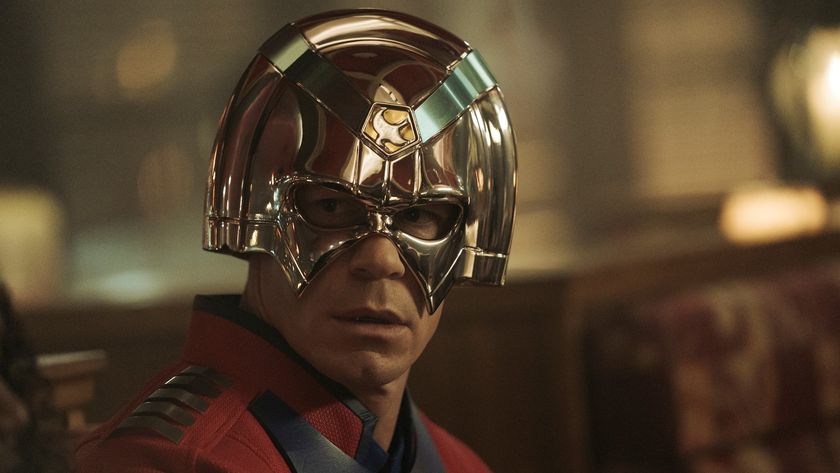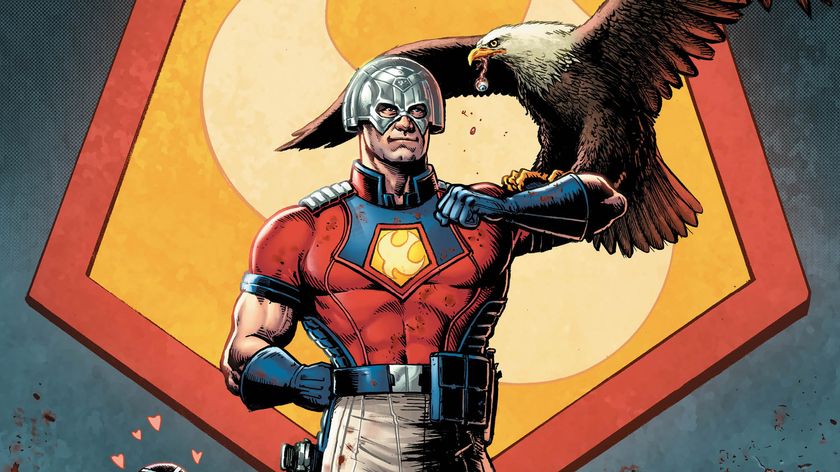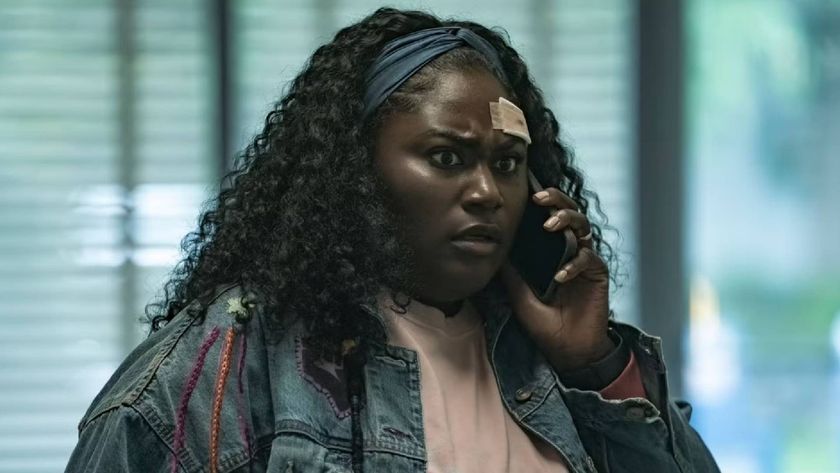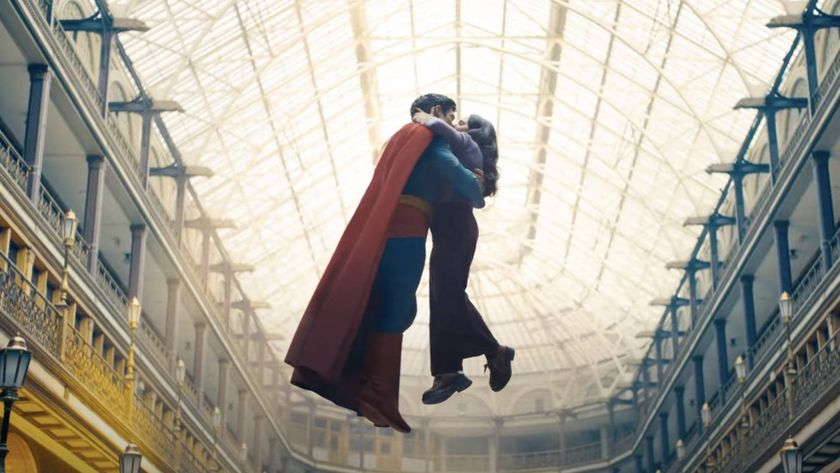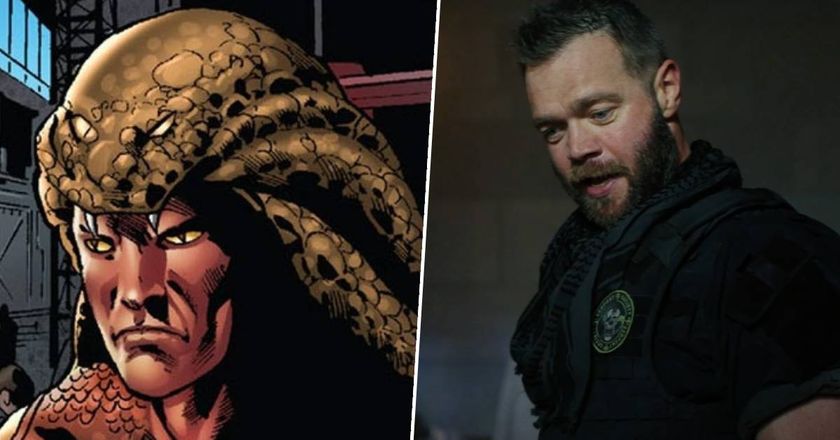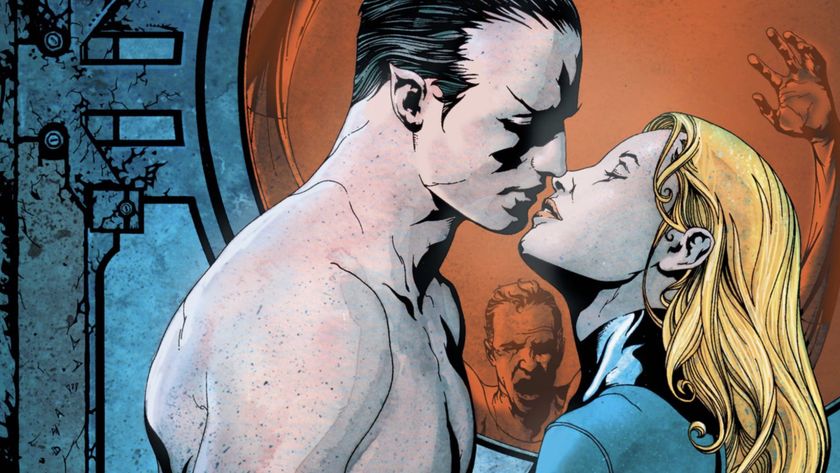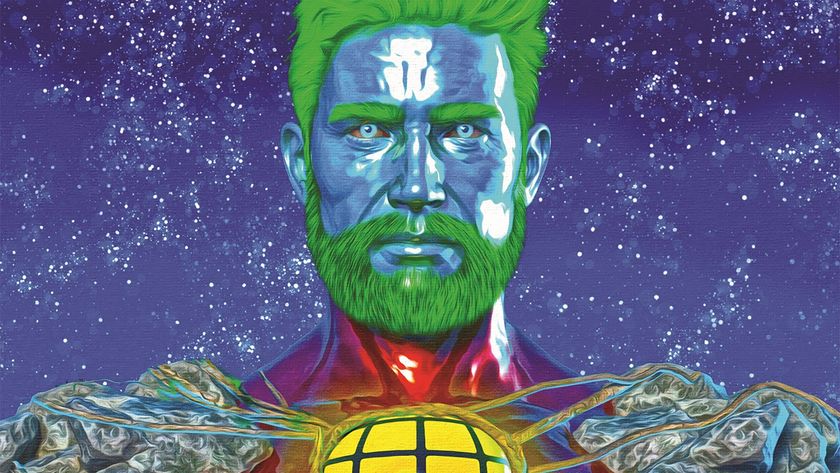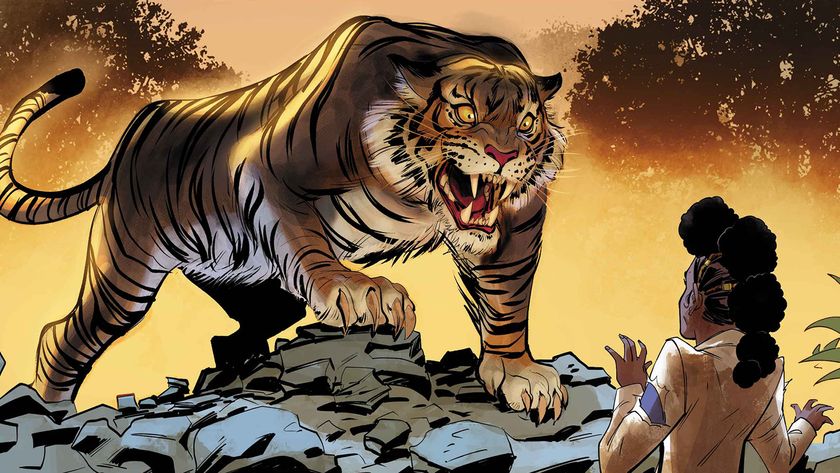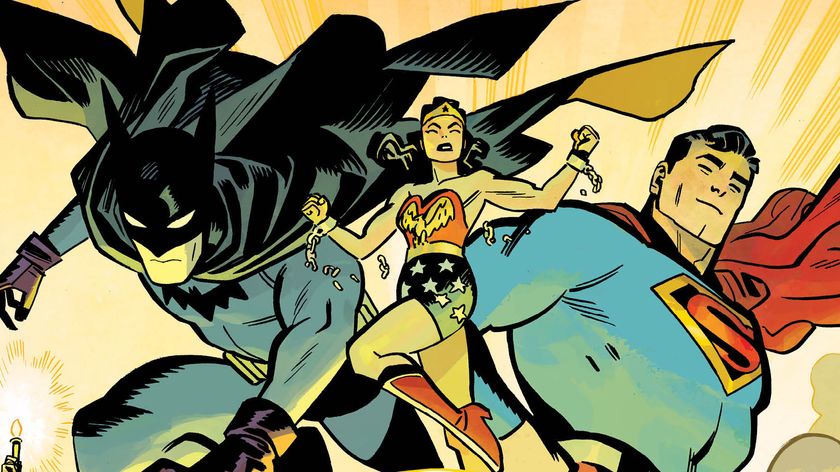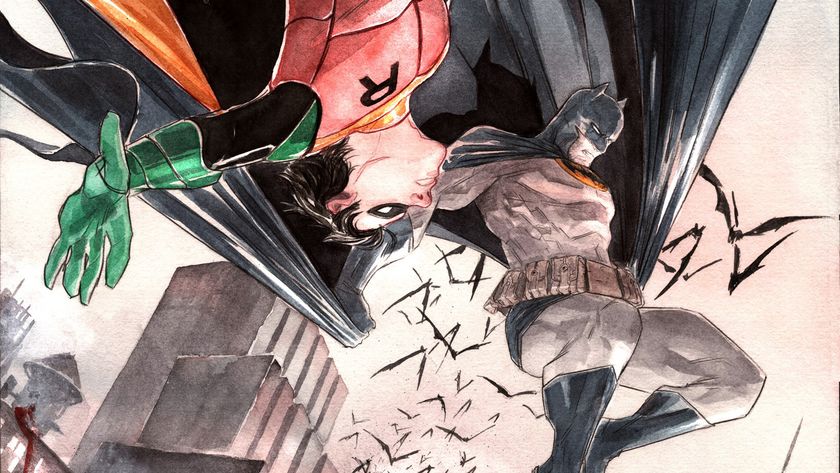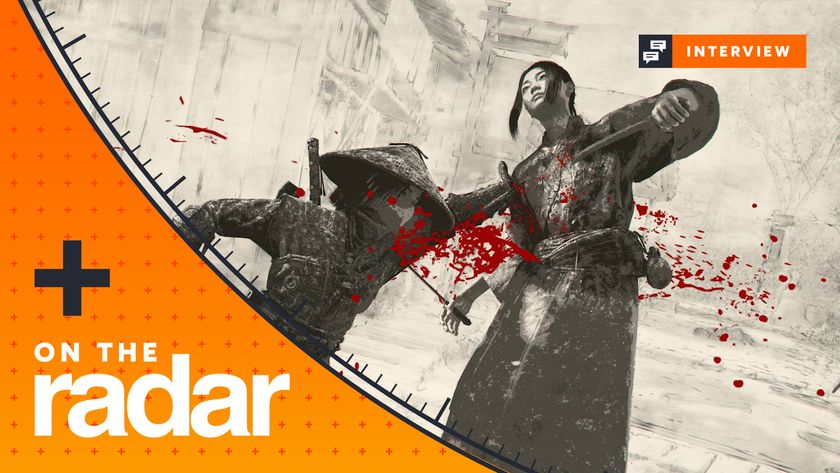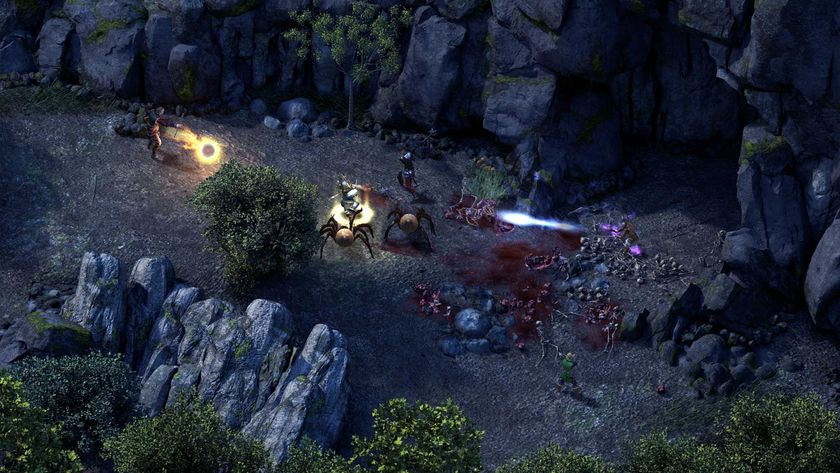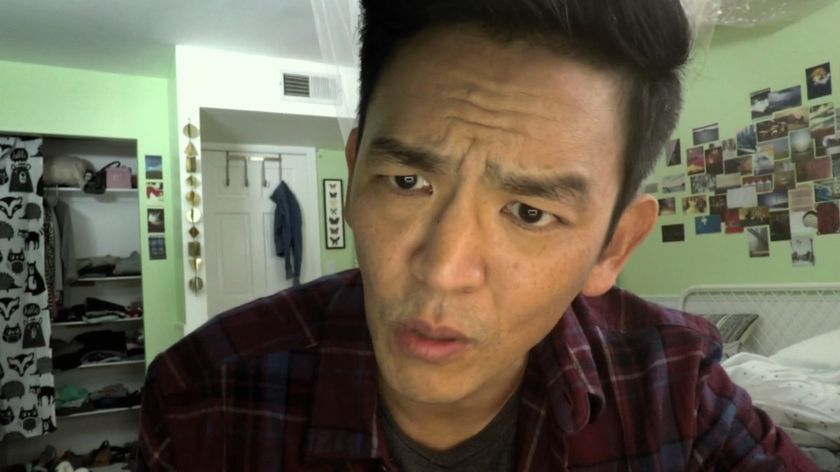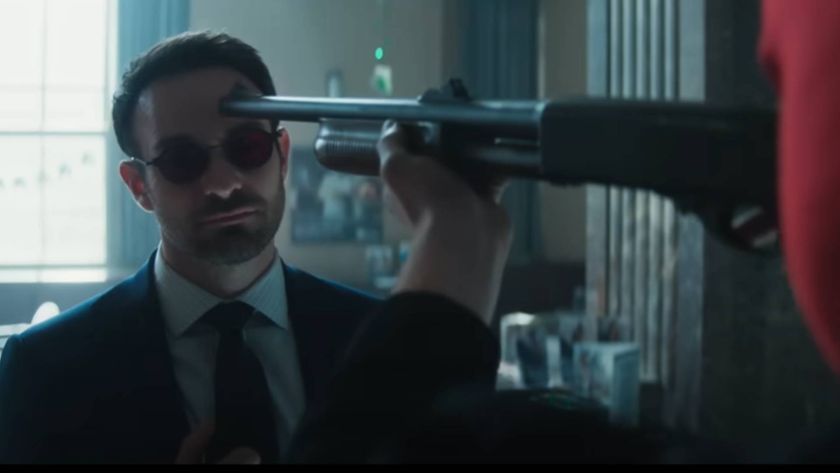Peacemaker - everything you need to know about John Cena's bizarre and brutal DC anti-hero
The comic book version of John Cena's Peacemaker has a bizarre history both on and off the page and a surprising connection to Watchmen
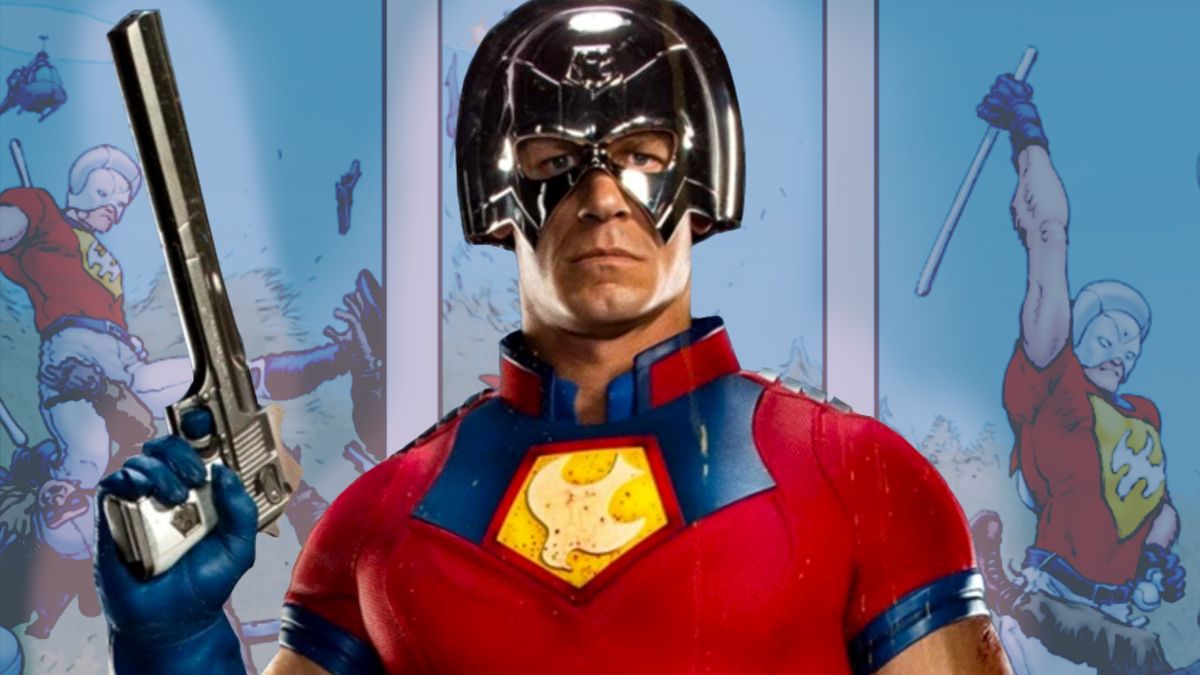
Peacemaker loves peace so much, he's about to make war on HBO Max in his own streaming series spin-off of The Suicide Squad.
With a brutal combat style and a strangely silly demeanor, John Cena's Peacemaker stands out among modern superhero adaptations for the bizarre dichotomy of his personality, and his four-color-fueled, comic book-inspired look.
Peacemaker is about to premiere of HBO Max on January 13, with trailers having shown off an irreverent, bloody action ride all focused on Cena's eponymous anti-hero.
So how does Cena's version of Peacemaker match up with the comic book version, who has his own extra weird and oddly violent past? We'll break it all down right now.
Who is Peacemaker?
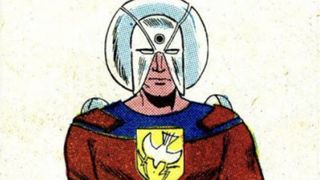
At first glance, Peacemaker may seem a bit like DC's Punisher (though he does predate Frank Castle by a decade) - a violent, gun-toting vigilante with an almost inscrutable code of personal honor. But Peacemaker's past has some particularly dark twists that make him somehow even more bizarre and brutal than his most obvious comparison.
First appearing in 1966's Fightin' 5 #40, not from DC but from Charlton Comics (we'll explain in a moment), the original Peacemaker was Christopher Smith, a pacifist whose dedication to his idea of 'peace' led him to take up arms and violently suppress those he deemed warmongers alongside his peacekeeping organization the Pax Institute.
However, those origins were changed slightly when DC purchased the rights to the superheroes of Charlton Comics, including Peacemaker, Blue Beetle, Captain Atom, The Question, Nightshade, Thunderbolt, and Judomaster. Designated as residents of Earth-4 in DC's Multiverse, the Charlton heroes were folded into DC continuity following the collapse of the Multiverse in 1985's Crisis on Infinite Earths.
Comic deals, prizes and latest news
Get the best comic news, insights, opinions, analysis and more!
Though he retained his look and some aspects of his character, the rebooted version of Smith, introduced in his own Peacemaker limited series, is a violent vigilante who has a psychological break when he discovers his father was secretly a Nazi who ran death camps during the Holocaust.
Believing himself to be haunted not just by the ghost of his Nazi father but by the ghosts of everyone his father ever killed, Smith also believes his distinctive helmet is a receptacle for all those spirits - who sometimes speak to Smith and offer him wisdom or strategy.
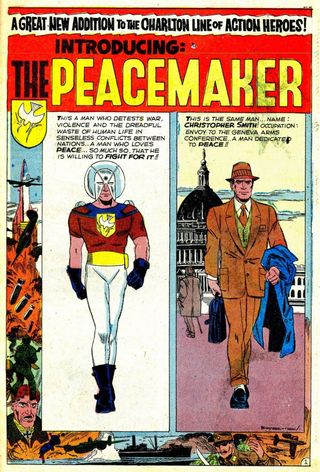
Despite his mental state and extreme violence, Smith is recruited as an operative of shadowy DC organization Checkmate as an enforcer, though he quickly proved too erratic and violent even for them, apparently dying in a suicide mission against the villain Eclipso.
This is the version of Peacemaker on whom John Cena's portrayal in The Suicide Squad is apparently based - though assumedly with a slightly different background to account for the contemporary setting (he'd be too young to have a Nazi father in 2021) as inspiration for his seemingly contradictory extremist views.
Smith was briefly replaced as Peacemaker by an operative of a group called the Pax Institute (taken from Peacemaker's '60s adventures) named Mitchell Webb, however, Smith did eventually return from the dead and earn a bit of redemption working alongside Jaime Reyes/Blue Beetle, the inheritor of another Charlton Comics identity.
Peacemaker has appeared in the DC Universe a few times since some of these aspects of continuity were dropped and rewritten in 2011's 'New 52' reboot, most notably in Grant Morrison and Frank Quitely's Multiversity: Pax Americana one-shot (more on that shortly), and in Doomsday Clock, in which the DC Universe and the continuity of Watchmen crossed over.
Which brings us to Peacemaker's connections to Watchmen, and to a character many readers might be more familiar with than the long-dormant DC vigilante: the Comedian.
Peacemaker and Watchmen
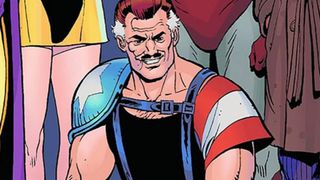
A hit since its initial publication in 1986-1987, Alan Moore and Dave Gibbons' postmodern deconstruction of the idea of Silver Age superheroes has become a household name in the intervening decades thanks to its film adaptation, TV sequel, comic book prequel, and continued acclaim as a seminal work of modern comic books.
Many of the characters of Watchmen have also become popular on their own, especially the core cast of Nite-Owl, Silk Spectre, Ozymandias, Rorschach, Doctor Manhattan, and, of course, the Comedian. But the weird thing is, the cast of Watchmen was almost totally different, without any of the same characters.
Initially, Moore and Gibbons planned to use the characters DC purchased from Charlton Comics as the cast of their story. And though DC initially allowed the use of the Charlton characters for the mature, alt-universe story, the creators and publishers came to disagreement when DC incorporated the world of Charlton Comics into the DC Multiverse as Earth-4, with plans to subsequently bring the characters to the mainstream DC Universe.
As a result, Moore and Gibbons decided to use original characters who would not later appear in other DC stories, with the intent that Watchmen would stand alone (this concept was later totally undone when DC created the comic book prequel Before Watchmen, and when the Watchmen characters and DC heroes actually crossed paths in Doomsday Clock).
To wit, they created analogs of the Charlton heroes they initially planned to use, with Blue Beetle becoming Nite-Owl, Nightshade becoming Silk Spectre, Thunderbolt becoming Ozymandias, The Question becoming Rorschach, Captain Atom re-envisioned as Doctor Manhattan, and finally, Peacemaker was remade as The Comedian.
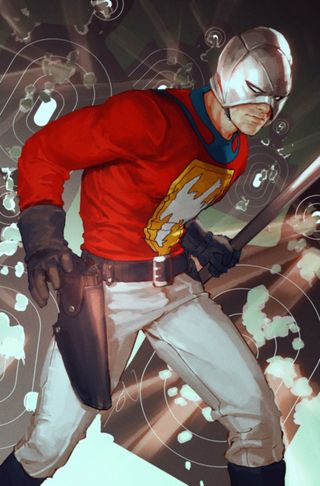
Perhaps most interestingly, The Comedian, a violent vigilante who becomes a war criminal in Vietnam as well as a sexual predator, predates DC's reboot of Peacemaker as a violent extremist who himself committed war crimes as a US operative in the Vietnam war - meaning the remade Peacemaker and his own 'variant' (to borrow an MCU term for an alt-Universe version of a character) developed basically the same way at the same time.
Later, things came even fuller circle in the aforementioned one-shot Multiversity: Pax Americana, in which Grant Morrison and Frank Quitely re-established Earth-4 in DC continuity - and in which the new Earth-4's versions of the classic Charlton heroes are, essentially, dark reflections of their Silver Age counterparts inspired by the original intent of Watchmen.
Peacemaker in the movies

Peacemaker's movie story is fairly similar to his comic book origin, with some slight changes. For one thing, his father isn't a Nazi - though according to the trailers, he is a very bad person, and he winds up in jail.
And for another, his helmet hasn't been shown to have any paranormal properties - though a scene from one of the teaser trailers shows it shining like a beacon, potentially indicating there's more to it than we know so far.
Following the events of The Suicide Squad, in which Peacemaker turns on the rest of his team on Amanda Waller's orders, resulting in Peacemaker being left for dead by Bloodsport, Peacemaker is recruited into a special program as a solo operative, forming the basis of the HBO Max show.
While Peacemaker's HBO Max show expands the DC movie universe, it's hard to say how or if the story it tells and the new characters it introduces will cross over with other DC films, as the continuity of DC movies is somewhat up in the air.
Peacemaker is a new addition to the Suicide Squad, but the team has a decades-long history of its own. Learn the oral history of DC's original Suicide Squad before seeing the new film.
I've been Newsarama's resident Marvel Comics expert and general comic book historian since 2011. I've also been the on-site reporter at most major comic conventions such as Comic-Con International: San Diego, New York Comic Con, and C2E2. Outside of comic journalism, I am the artist of many weird pictures, and the guitarist of many heavy riffs. (They/Them)
